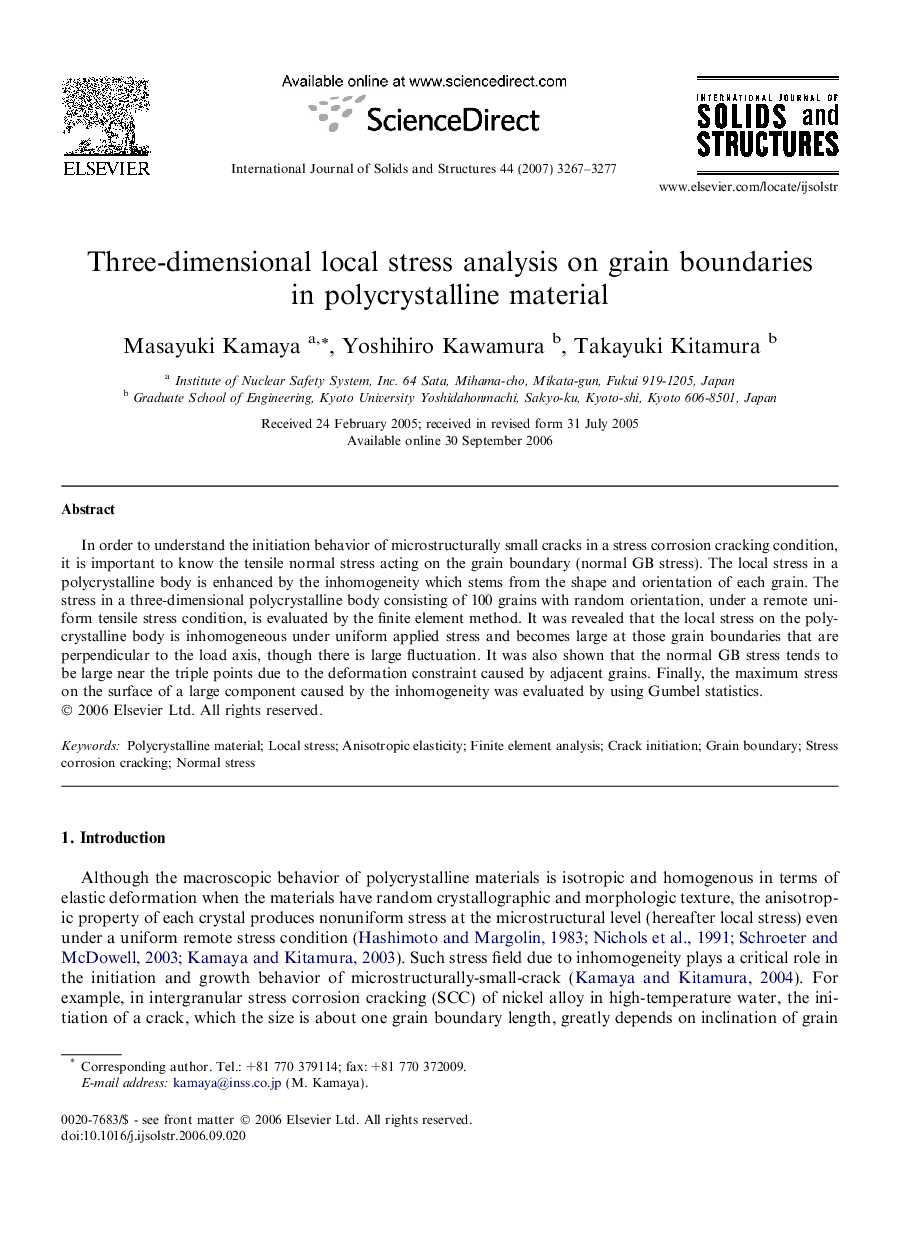| Article ID | Journal | Published Year | Pages | File Type |
|---|---|---|---|---|
| 279735 | International Journal of Solids and Structures | 2007 | 11 Pages |
In order to understand the initiation behavior of microstructurally small cracks in a stress corrosion cracking condition, it is important to know the tensile normal stress acting on the grain boundary (normal GB stress). The local stress in a polycrystalline body is enhanced by the inhomogeneity which stems from the shape and orientation of each grain. The stress in a three-dimensional polycrystalline body consisting of 100 grains with random orientation, under a remote uniform tensile stress condition, is evaluated by the finite element method. It was revealed that the local stress on the polycrystalline body is inhomogeneous under uniform applied stress and becomes large at those grain boundaries that are perpendicular to the load axis, though there is large fluctuation. It was also shown that the normal GB stress tends to be large near the triple points due to the deformation constraint caused by adjacent grains. Finally, the maximum stress on the surface of a large component caused by the inhomogeneity was evaluated by using Gumbel statistics.
